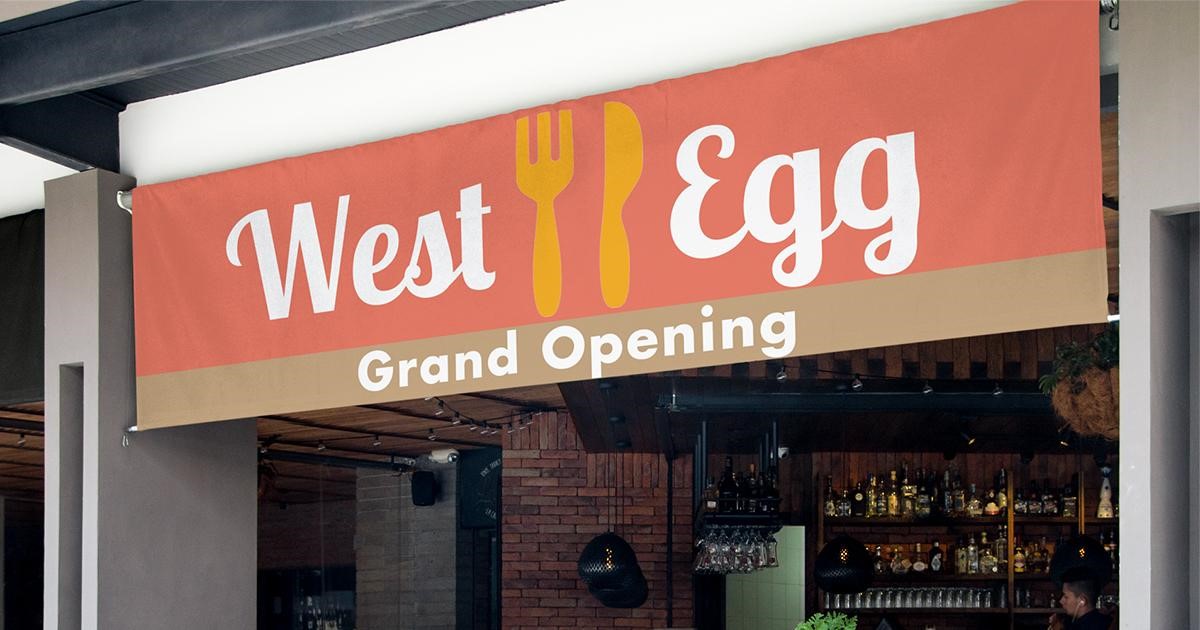There are times when a message needs to be shared and there’s only one good
way to share it: Loudly, boldly and with high visibility. Maybe it’s the
deal of a lifetime, the sale of a season or the announcement of a block
party or basketball tournament. Regardless of the event, these are the times
when a banner, sign or other medium of large-format printing is the
hands-down best way to communicate.
Whenever you find yourself needing to communicate with a banner or sign, you
know that U.S. Press is the best place to have one printed. But there are
some rules to keep in mind when designing artwork or other components of
your large format printed piece. U.S. Press is here to help in that regard,
too. Read on to know the rules of
designing for large scale printing.

General Design Tips
To effectively design for large format, you must realize what it means to
work with so much space. Your images and message will need to be large
enough to properly use all of the available space. Additionally, messages
from
banners and signs
aren’t viewed up close – they’re generally viewed from a distance. This
means the message in your design should be large, clear and easy to read.
Use clean, sans serif fonts that are readable from a distance, and keep your
message limited to the most important information. Remember: no one can read
long paragraphs of text from a distance, so stick to bold headlines and
minimal text.
On that note, be careful about the quantity of images you place on your
design. Too many images will appear cluttered and be hard to view from a
distance. If possible, limit your images to one or two per large format
design.
Image Quality and Resolution
For company logos and other similar images, it’s important to use
vector files, as they can be stretched to any size and retain complete and total image
quality. As a good rule of thumb, you should always keep vector files of
your company’s main logos and artwork handy to use on any printing or other
design job.
Raster image files (like photographed images) can be used, but must be a
certain resolution after they’re stretched to size. For images like
these, we recommend a resolution of at least 100 PPI at print size to ensure
good quality. Generally, raster image files that have been taken off of
social media feeds like a Facebook page will not meet this requirement. A
photo taken directly from the camera that took the photo may meet this
requirement, but not after it’s been uploaded to the internet. Any image
file – raster or vector – that’s been compressed or had its format changed
will no longer be a viable option for large-scale printing. All design
elements should ideally be done in CMYK, to ensure the best quality result
after printing.
Margins and Bleeds
When designing any printed piece, it’s important to consider margins and
bleed. With smaller pieces, like
postcards, bleeds and margins can be as narrow as 1/8th of an inch. But
with large format designs, you need larger margins and bleeds. Allow for at
least an inch of margin and an inch of bleed to make sure your designs
retain integrity throughout the printing process. Also, lots of large format
products have features like welds or grommets, depending on the material and
function of the printed piece. A one-inch margin and one-inch bleed will
make sure no welds or grommets interfere with the integrity of your design.
Keeping all of these ideas in mind when designing your large-scale printed
piece will ensure your finished product is an effective, attractive piece
that delivers your message perfectly. As always, your U.S. Press account
manager is standing by to assist you with any step in the process.